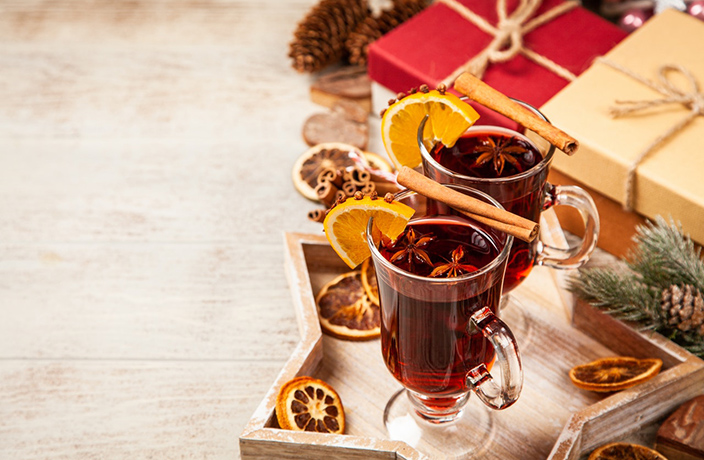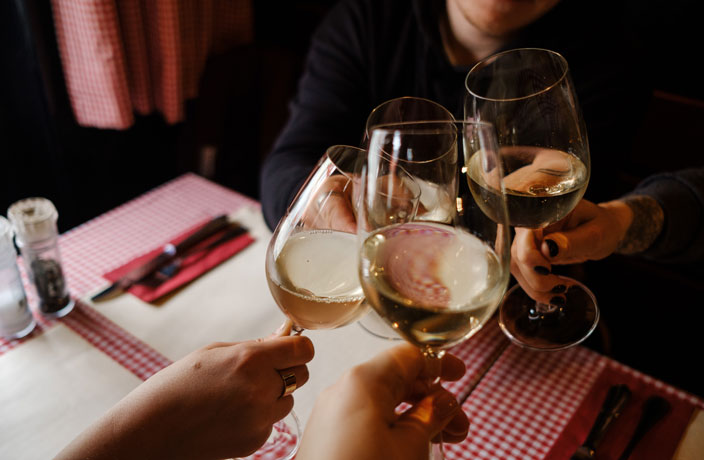Established in 2010 by Swiss entrepreneur Claudia Masueger, whose family has been in the wine business for four generations, Cheers has a presence in 16 cities throughout China and is about to open its 62nd store nationwide. In the south, you can find Cheers in Chengdu, Shenzhen and Zhuhai.
Step 1: Look at the wines’ appearance
Looking at the wine can give us some clues about its condition, color, age and even grape variety. To get the best look at a wine’s color, tilt the glass at an angle of 45 degrees away from you, preferably against a plain background, a white tablecloth or a piece of white paper. In practice, this seeing stage should not take more than five seconds, because all the answers you can find are on the label (vintage, variety, alcohol and sugar), unless you are doing the tasting blind.
Condition: the clarity of the wine will reveal if the wine has fault; almost all the wines we taste should be bright and clear. If the wine is hazy, it’s usually suffering from some sort of malady and will not taste very pleasant.
Age: as white wines age they tend to change colour towards more yellow and brown colours, increasing in overall pigment. Red wines tend to lose colour, becoming more transparent as time goes on.
Alcohol and sugar: wine legs (streaks that form on the glass when a wine is swirled) can tell us if the wine has high or low alcohol and/or high or low sugar. The thicker and more viscous the legs, the more alcohol or residual sugar the wine has.
Step 2: Smell the wine
Aromas reveal a lot about wine, and an experienced taster will be able to tell the grape variety, whether or not the wine was oak-aged, where the wine is from and how old the wine is. For people who are purely seeking pleasure from wine drinking, however, all you need to know is that wine aromas can be split into three categories:
Varietal aromas or primary aromas: grape-derived, these include fruit-driven, herbal and floral notes. An example is lychee aromas for moscato grapes and green grass for sauvignon blanc.
Aromas from wine making: come from wine-making practices. The most common aromas are yeast-derivative and are most easy to spot in white wines, like the buttery aromas from chardonnays which have been through oak fermentation.
Aromas from ageing: these aromas are mostly savoury, such as roasted nuts, baking spice, vanilla, autumn leaves, old tobacco, cured leather or mushroom.
Key to smelling the wine is the act of swirling your wine glass, which brings more air in and allows the wine to breath, encouraging less volatile aromas to come out. There are some common wine faults, which are mostly due to bad storage conditions, that can be discerned through scent:
Corked: corked wine usually lacks fruit and charm on the palate; this masks the fresh, fruity aromas with an unpleasant damp cardboard or musty smell
Oxidation: a dried cork or a long-opened bottle will allow air sneak in to the bottle and cause oxidation, which also masks the freshness of the wine and creates volatile acidity, like there’s vinegar in your bottle.
Step 3: Taste the wine
Finally, you’re allowed get some of the wine into your mouth! It’s often said that tasting is an entirely subjective matter; the sweetness, acidity, tannins and certain aroma compounds differ according to our sensitivities.
Sweetness: an indicator of how much sugar a wine contains. Wines range from 0 grams per liter residual sugar (g/l RS) to about 220g/l RS.
Acidity: causes the mouth to water, and its presence makes wines taste vibrant and refreshing. It’s present in all wines, although levels in white wines are generally higher than red. Certain varieties, such as riesling and sauvignon blanc, are typically high in acidity. Cool climates generally result higher levels of acidity than warm climates. Acidity is very important in sweet wines; too little acidity makes the wine sticky and cloying.
Tannins: also noticeable in tea, these arise in wine from two places: the skins of grapes and oak aging. Every grape variety has a different inherent level of tannins, depending on its individual character. For example, pinot noir and gamay have inherently low-levels of tannins, whereas malbec and cabernet have very high levels.
Body: sometimes described as mouth-feel, this is the sensation of richness, weight or viscosity, and is a combination of the effects of alcohol and tannins, sugars and flavor compounds extracted from the skins.
Finish: how long the desirable flavors linger in the mouth after the wine has been swallowed or spat out. Usually described as either long or short.
Cheers is planning big things in the south for 2017, so expect to see more stores opening near you. For more information about the company, visit www.cheers-wines.com.






















0 User Comments